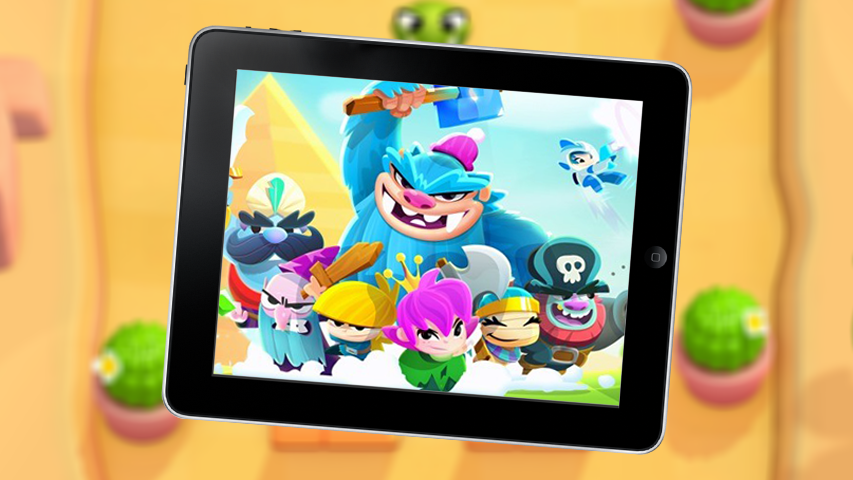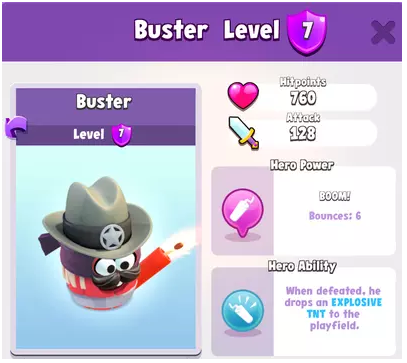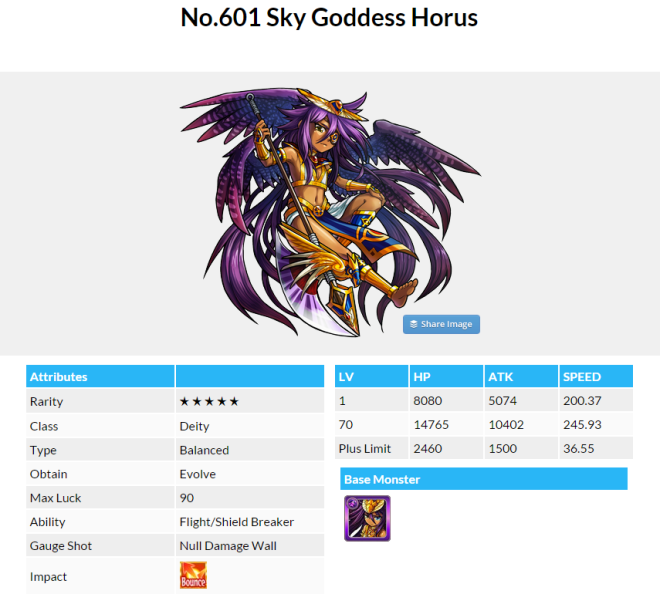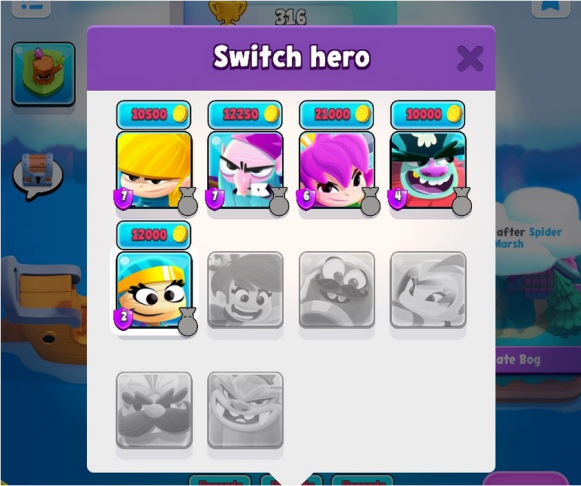Supercell recently launched the Smash Land game. Adam Telfer from Wooga talks about the mechanics of the project, monetization errors and the chances of success of the game.
Supercell is currently in a trial run of a project called Smash Land. It launched in Canada and Australia on March 31, 2015 (at the time of writing this post, about two months have passed since the launch). Without a doubt, the soft launch of the Supercell project is an event for the fritupley segment of the industry. Supercell is extremely selective about games that live up to the softlonch. Each title goes through a tough internal screening, and only the best survive. Only those games that, according to Supercell, have the opportunity to get to the top of the box office charts reach the trial run.
Smash Land uses the basic gameplay mechanics of Monster Strike, a popular Japanese battler. In December 2014, he overtook Puzzles and Dragons and reached the top of the local charts. For Clash of Clans, the Finnish team simplified Backyard Monsters. She decided to do the same with Monster Strike in order to make the project suitable for Western markets. But in the process of simplification – has the game remained whole?
Is there enough left to make the game a success?
Battle mechanics in Smash Land
Supercell decided to leave the combat mechanics the same as in Monster Strike. It is built on physics. Almost the same as in billiards, in Monster Strike to achieve the result you need to predict how the balls will collide on a flat surface. In Smash Land, everything is the same: you need to “launch” your character so that he touches the enemy. Here is a video from which you can get a more detailed idea of the mechanics of the game.
In general, the mechanics of combat in the new Supercell project are simpler, “cleaner” and much clearer than in Monster Strike. Each character has its own ability, which looks pretty cute.
The gameplay (for mobile F2P) is very strong. It is easy for any player to “get involved” in it. Very quickly there is a feeling that I have achieved some skill in the game – for example, I can predict some throws and feel very smart when I manage to create a successful combo. In addition, thanks to physics, luck plays a big role in the game. As in Peggle, it is easy to predict the behavior of the ball after the first throw, but as soon as it bounces off the walls several times, it is almost impossible to guess the result. Therefore, each move can lead to “unexpected luck”, which is very important for casual games. The players feel very smart – and every move is unpredictable.
Overall, Supercell managed to take the best from Monster Strike and create a clearer gaming experience. The game has a great action game, it’s easy to get hooked on it.
Characters
Players can not only take part in the battle, but also swing their characters. And then Smash Land becomes less and less like Monster Strike. In Monster Strike, the character has much more characteristics.
A character from Smash Land
A character from Monster Strike
It is enough to compare these two pictures to see how much the two games differ from each other. Smash Land is, of course, much easier to understand than Monster Strike. Players do not need to think about the long term and build an upgrade strategy.
Smash Land differs from Monster Strike in how pumping takes place. Characters can be improved with gold or by waiting for some time. The user gets gold by winning a match, or collects it during a treasure hunt. For gold, he grads his character. The price of each subsequent improvement is growing rapidly. As a result, you come to the fact that you have to spend a lot of matches (or pay money) to afford another grade.
Character Enhancement Screen in Smash Land
In Smash Land, the pumping system is much simpler than in Monster Strike. Monster Strike, just like Puzzles and Dragons, uses the gacha principle [for more information about what it is, you can find out here – approx. editorial offices]. To improve your hero, you need to collect a lot of monsters, and then sell them for experience points.
The creators of Smash Land did not experiment with gacha and simplified the economy in the game to the usual grind.
In the long run, Monster Strike, with its monster buying and collecting system, has a huge advantage over Smash Land. Instead of just 10 characters in Monster Strike, there are about 1000 of them. The creators of Monster Strike managed to create a system to which it is possible to maintain user interest for much longer.
In order to somehow soften the grind for players, you need to create random jumps of progress. We need to figure out how to add an element of luck to the game – as it was, for example, in Diablo. It is necessary to make sure that each battle can end with a sudden happy surprise, from which the player’s progress will noticeably accelerate. In the same Diablo, you could accidentally find a legendary weapon that greatly simplified the victory over the enemy.
Rare Characters from Monster Strike
In Monster Strike, a player with the help of gacha can randomly get a rare monster. In this case, he feels that he was lucky: he got for free what he would otherwise have got for money or at the cost of time spent. After receiving a rare monster, the player will skip the levels that seemed difficult before and feel happy.
At the same time, the progress itself can be quite slow. But due to the fact that such jumps periodically appear, the player is much more likely to be involved for a long time.
These are the leaps of progress that are missing in Smash Land. To move forward, you just need to grad your hero. Each victory brings a certain number of points. The price of improvement increases from time to time.
At the same time, you have only 10 heroes and a very limited number of upgrades at your disposal. It turns out that the meta-game is too simple. I have the same heroes as everyone else, the same upgrades as everyone else, which means I can’t put together a unique set of characters to become cooler than my neighbor. And without that, it’s very difficult to get attached to your heroes – and to be involved in the long run.
Coveted upgrade
Smash Land has abandoned many of the inherent features of Monster Strike, simplifying, for example, the structure of character improvement. However, regardless of whether there are collectible monsters in your game or not, if you want your players to remain interested in it, you need them to be interested in grading their character.
In Smash Land, the user has very little motivation to improve the heroes. The fight itself is tied to skill and luck (as I described above). The outcome of the match depends more on how many ricochets the hero makes than on how pumped he is. I won more than once against an opponent who was many levels ahead of me. This means that not many players will want to improve their character. Instead of wanting to assemble as strong a team as possible, players will rely on luck or skill. Most likely, they will be satisfied with the team they already have. This state of affairs will not benefit any game.
In this project, the entire monetization is tied to the character improvement system. This means that the characteristics of the characters should directly affect the outcome of the battle. If the player doesn’t really want to grad his heroes, then the whole monetization system goes downhill. How is money made in this game? The player grinds coins (or spends real currency) to skip the timer to upgrade the hero (which is 8 hours or more). After spending a certain amount of money on the game and seriously improving my heroes, I did not feel that my team had become stronger. I still merged a bunch of multiplayer battles and eventually faced the fact that it became even more expensive to improve the heroes. That is, there was a feeling that it was useless to spend money in the game.
Conclusion
If Supercell hadn’t launched this game, it wouldn’t have received such attention. The project itself is neat, it’s interesting to play it. He has all the data to become another successful shareware game, namely:
- a good rhythm of content submission;
- multiplayer mode;
- guilds where you can join without linking your account to Facebook;
- low entry threshold, the game is “easy to play, difficult to succeed.”
And yet, the meta-game is too primitive:
- there are not enough options for choosing a character, the choice does not affect the strategy;
- the upgrade quickly becomes tedious, you need to grind for a long time;
- low motivation for pumping the team.
What are the chances of the game in the market?
While the title is in a trial run. If we compare the first two months of Smash Land and Boom Beach, then the latter was much more active both in downloads and at the checkout (according to App Annie). This indicates that Supercell does not want to spend money on marketing and traffic until it has finished the game.
Supercell is merciless to its projects in a state of softlonch. Last year, she launched the game Spooky Pop, which failed to achieve the necessary results. And in the end it was decided to close the project.
Will Supercell be able to remake the game while it is in trial run? I think it will be difficult. There’s not much left of the original Monster Strike, too much of what made the game work has been removed. It’s hard to say whether minor changes will help fix everything that needs to be fixed. To achieve the result, you will have to completely redesign the character leveling system.
I think Smash Land can serve as a good visual example for mobile game developers. Simplicity, of course, opens access to a wide audience. But the emphasis in the shareware game should not be on it, but on the long-term retention of users. Game designers need to try to have long-term goals in the meta-game. Otherwise, the project will not be successful.
A source: http://mobilefreetoplay.com
Other materials on the topic:





